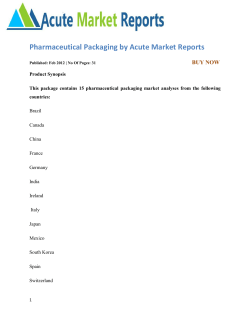
- Metal Packaging Europe
Metal packaging industry provides new insight into efficient resource management There is a general concern in society today about the earth's limited resources and about using them in an efficient and sustainable manner to minimise the environmental impact. Using materials efficiently creates “more with less” and delivers greater value for society with less input. In view of these concerns, the metal packaging industry, which mainly uses steel and aluminium in packaging applications, has looked more closely at the characteristics of metals and other packaging materials (such as glass, plastic and paper) with a view to maximising the potential for resource efficiency of metal packaging. The Swiss consultancy Carbotech, together with an expert group from the metal packaging sector, has carried out a study to identify more detailed and precise categorisation of packaging materials. The current approach simply classifies materials as renewable or non-renewable. This simplistic categorisation is, in our view, insufficient for the development of good practices in sustainable resource management: it fails to account for material degradation and its impact on resource management and is therefore incomplete. The study examines both the chemical and physical properties of a material to help define what is permanent and non-permanent. The research elaborates on the differences between materials that lose their inherent properties when recycled (degradation) and materials that do not. Those materials that do not degrade can be infinitely recycled which brings significant savings in material resources. This new categorisation is important, since the permanent materials concept (CPeM) perfectly matches society’s vision for a circular economy, as defined by the “zero waste society”. In the study Permanent Materials are defined as follows: “A permanent material is one for which the inherent properties do not change during use and regardless of repeated recycling into new products. Its recycling does not necessarily require the addition of primary material or additives to enable the basic material function / properties.” The permanent material concept is built on a combination of inherent material properties and good material stewardship. Together, they create materials that are infinitely recyclable and therefore contribute to the circular economy. And whilst materials may be characterised as permanent, there may be individual applications that do not support multiple use: for example, metals used in explosives can clearly not achieve a material to material loop. The study concludes that aluminium and steel meet the qualifications for the concept of permanent materials as they are generally used in a way which excludes degradation during the usage phase and during the recycling process as well. These metals can be used over and over again without losing their properties. Brussels contacts Joris Nachtergaele – Mobile: +32 477 93 14 56 – Email: info@metalpackagingeurope.org www.metalpackagingeurope.org
© Copyright 2025





















